Qizheng Sun
bupt.edu.cn
EnergyPatchTST: Multi-scale Time Series Transformers with Uncertainty Estimation for Energy Forecasting
Aug 07, 2025Abstract:Accurate and reliable energy time series prediction is of great significance for power generation planning and allocation. At present, deep learning time series prediction has become the mainstream method. However, the multi-scale time dynamics and the irregularity of real data lead to the limitations of the existing methods. Therefore, we propose EnergyPatchTST, which is an extension of the Patch Time Series Transformer specially designed for energy forecasting. The main innovations of our method are as follows: (1) multi-scale feature extraction mechanism to capture patterns with different time resolutions; (2) probability prediction framework to estimate uncertainty through Monte Carlo elimination; (3) integration path of future known variables (such as temperature and wind conditions); And (4) Pre-training and Fine-tuning examples to enhance the performance of limited energy data sets. A series of experiments on common energy data sets show that EnergyPatchTST is superior to other commonly used methods, the prediction error is reduced by 7-12%, and reliable uncertainty estimation is provided, which provides an important reference for time series prediction in the energy field.
* Accepted for publication at the International Conference on Intelligent Computing (ICIC 2025). 12 pages. The final authenticated version is published in the Lecture Notes in Computer Science (LNCS) series, vol 15860, and is available online. This is the author's version of the work submitted for peer review
Deep Joint Source-Channel Coding for Wireless Image Transmission with Semantic Importance
Feb 05, 2023Abstract:The sixth-generation mobile communication system proposes the vision of smart interconnection of everything, which requires accomplishing communication tasks while ensuring the performance of intelligent tasks. A joint source-channel coding method based on semantic importance is proposed, which aims at preserving semantic information during wireless image transmission and thereby boosting the performance of intelligent tasks for images at the receiver. Specifically, we first propose semantic importance weight calculation method, which is based on the gradient of intelligent task's perception results with respect to the features. Then, we design the semantic loss function in the way of using semantic weights to weight the features. Finally, we train the deep joint source-channel coding network using the semantic loss function. Experiment results demonstrate that the proposed method achieves up to 57.7% and 9.1% improvement in terms of intelligent task's performance compared with the source-channel separation coding method and the deep sourcechannel joint coding method without considering semantics at the same compression rate and signal-to-noise ratio, respectively.
Deep Joint Source-Channel Coding Based on Semantics of Pixels
Aug 24, 2022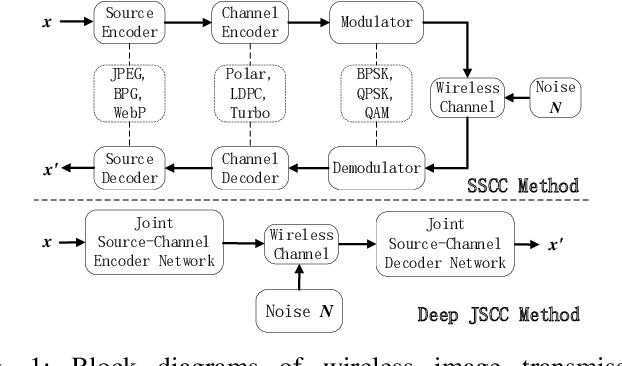

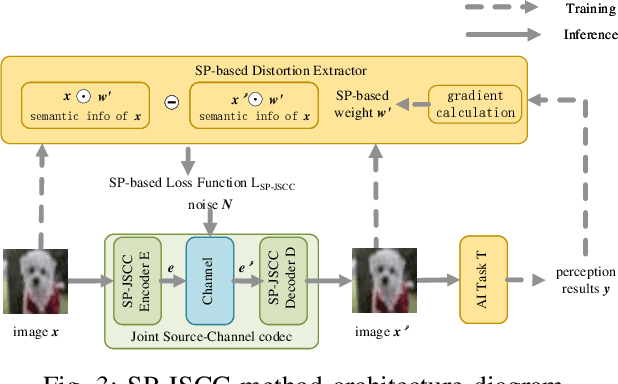

Abstract:The semantic information of the image for intelligent tasks is hidden behind the pixels, and slight changes in the pixels will affect the performance of intelligent tasks. In order to preserve semantic information behind pixels for intelligent tasks during wireless image transmission, we propose a joint source-channel coding method based on semantics of pixels, which can improve the performance of intelligent tasks for images at the receiver by retaining semantic information. Specifically, we first utilize gradients of intelligent task's perception results with respect to pixels to represent the semantic importance of pixels. Then, we extract the semantic distortion, and train the deep joint source-channel coding network with the goal of minimizing semantic distortion rather than pixel's distortion. Experiment results demonstrate that the proposed method improves the performance of the intelligent classification task by 1.38% and 66% compared with the SOTA deep joint source-channel coding method and the traditional separately source-channel coding method at the same transmission ra te and signal-to-noise ratio.
Semantic-assisted image compression
Jan 29, 2022Abstract:Conventional image compression methods typically aim at pixel-level consistency while ignoring the performance of downstream AI tasks.To solve this problem, this paper proposes a Semantic-Assisted Image Compression method (SAIC), which can maintain semantic-level consistency to enable high performance of downstream AI tasks.To this end, we train the compression network using semantic-level loss function. In particular, semantic-level loss is measured using gradient-based semantic weights mechanism (GSW). GSW directly consider downstream AI tasks' perceptual results. Then, this paper proposes a semantic-level distortion evaluation metric to quantify the amount of semantic information retained during the compression process. Experimental results show that the proposed SAIC method can retain more semantic-level information and achieve better performance of downstream AI tasks compared to the traditional deep learning-based method and the advanced perceptual method at the same compression ratio.
Semantic Communications With AI Tasks
Sep 29, 2021
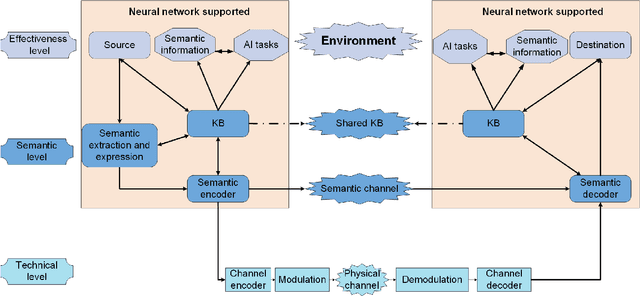
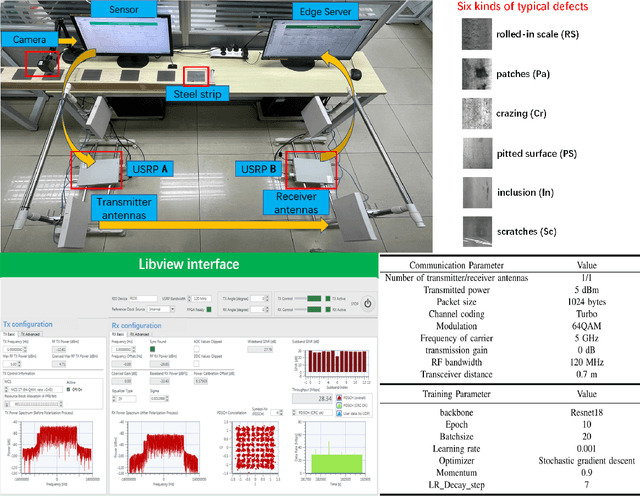
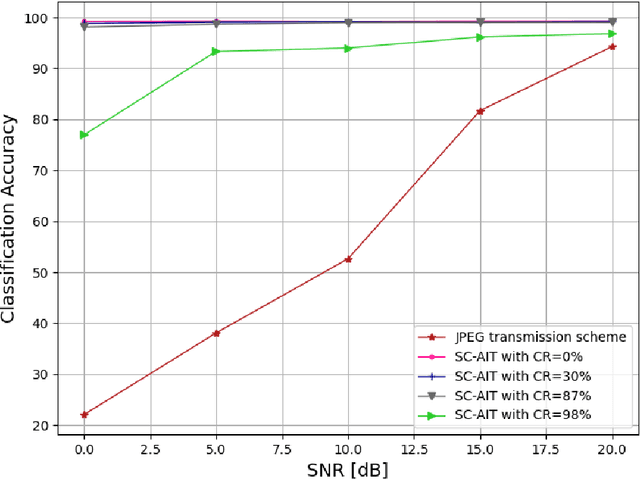
Abstract:A radical paradigm shift of wireless networks from ``connected things'' to ``connected intelligence'' undergoes, which coincides with the Shanno and Weaver's envisions: Communications will transform from the technical level to the semantic level. This article proposes a semantic communication method with artificial intelligence tasks (SC-AIT). First, the architecture of SC-AIT is elaborated. Then, based on the proposed architecture, we implement SC-AIT for a image classifications task. A prototype of SC-AIT is also established for surface defect detection, is conducted. Experimental results show that SC-AIT has much lower bandwidth requirements, and can achieve more than $40\%$ classification accuracy gains compared with the communications at the technical level. Future trends and key challenges for semantic communications are also identified.
 Add to Chrome
Add to Chrome Add to Firefox
Add to Firefox Add to Edge
Add to Edge